
Basic bread is one of the simplest of foods to make, requiring only yeast, flour, salt and water. This combination produces chewy, crusty loaves, perfect with fresh butter or as an accompaniment to other foods. If the baker adds fats, sugar and eggs, the bread becomes softer, more delicate and longer lasting. Most festive breads and sweet breads use considerable quantities of whole eggs or just yolks, depending on the desired color and texture.
Eggs in Yeast Breads
The eggs added to yeast breads serve a few distinct purposes. First, they're emulsifiers. The richest breads, such as Italian panettone, French brioche or German stollen, all contain significant amounts of butter. The eggs help the butter remain incorporated in the dough, instead of simply melting and running out. Second, baked goods get their structure and texture when proteins in their ingredients congeal in the heat, trapping air bubbles. Eggs add protein, and therefore structure, to the bread. Finally, eggs add tenderness and richness to the bread's dough.
Whole Eggs
Many sweet breads use whole eggs as a major ingredient. The yolks contribute their fattiness, emulsifiers and flavor, while the whites provide additional protein. The high level of protein in the egg whites helps sweet breads bake to a relatively light texture, compensating for the rich bread's weaker gluten development. Recipes heavy in whole eggs use relatively little water or milk, with the egg whites providing the dough with moisture.
Egg Yolks
Sweet bread recipes that use egg yolks instead of whole eggs tend to be denser and richer. The egg yolks themselves add fat, richness and flavor to the bread, and they emulsify large quantities of butter. That means sweet breads using egg yolks have an unusually rich and soft crumb, almost cake-like in texture. The yolks also give the breads a pleasantly golden color. Historically, this was important, because for centuries gold-colored foods were symbolic of prosperity and good fortune.
Variations
There are hundreds of variations on sweet breads, ranging from barely sweetened to heart-stoppingly rich. Although some recipes use only whole eggs and some use only yolks, it's more common to see a combination of both. A recipe that supplements whole eggs with a few additional yolks has the lighter, chewier texture of an egg-based bread, but with a richer flavor. A bread that primarily uses yolks but adds a whole egg or two is rich and soft, but shows more lift than a bread made with all yolks. Sweet doughs are relatively forgiving, so if you have a favorite recipe it's easy to experiment by varying the proportion of whole eggs to yolks.
Related Articles

What Does Eggs vs. Oil Do for Bread ...

How to Make Bread Tender

Can I Make Boxed Devil's Food Cake Mix ...
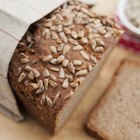
Russian Rye Bread vs. Pumpernickel

Does Adding an Extra Egg to Brownie Mix ...

Main Ingredients of English Muffins
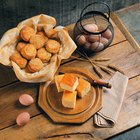
What Can I Use as an Egg Substitute ...
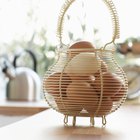
How Much Applesauce Do You Substitute ...
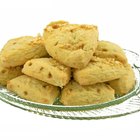
What Is the Difference Between Scones & ...

How to Make Bread Chewy
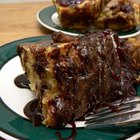
The History of Bread Pudding
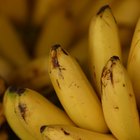
How to Replace Eggs With Applesauce, ...

What Can I Use Instead of Eggs to Brush ...

What Can I Use as an Egg Substitute ...

What if You Forget to Put Eggs Into ...
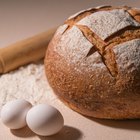
How to Make Nigerian Bread
What Is the Difference Between Cake ...
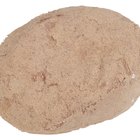
Do Snickerdoodles Need Cream of Tartar?
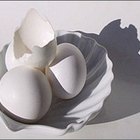
How to Freeze Egg Whites

What Can You Use in Place of Egg Yolk ...
References
- On Food and Cooking: The Science and Lore of the Kitchen; Harold McGee
- The Professional Pastry Chef; Bo Friberg
Writer Bio
Fred Decker is a trained chef and prolific freelance writer. In previous careers, he sold insurance and mutual funds, and was a longtime retailer. He was educated at Memorial University of Newfoundland and the Northern Alberta Institute of Technology. His articles have appeared on numerous home and garden sites including GoneOutdoors, TheNest and eHow.
Photo Credits
Jupiterimages/liquidlibrary/Getty Images